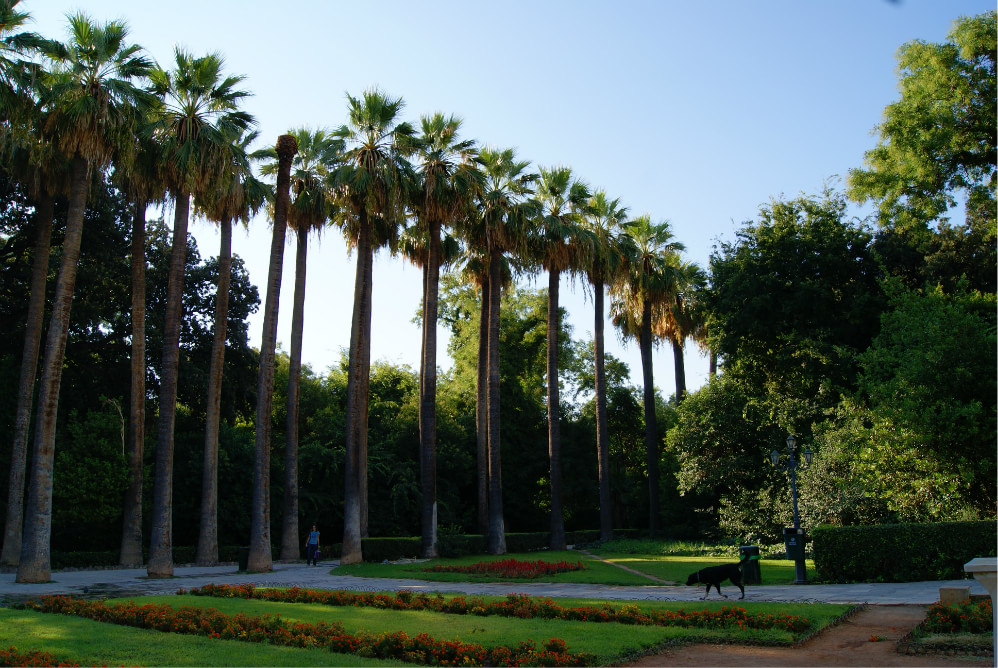
paneriai (ponar)
景点印象
zanrafel
This is such an important part of Lithuania's history - where 95% of the Jews of the state were murdered by the Nazis - the majority from Vilnius in the forests. However, I was lucky as we took part in a tour by JeruLita with Svetlana (who was an absolutely fantastic guide). If we did not have a guide it would have been a memorial than a learning experience as well. Also shame the museum was not open - it is only open by appointment during Winter which is a shame.
Wallyontravel
The memorial itself is rather small, but it's a real must to see, it's easy to reach by train from Vilnius and only requires a short walk from the train station, about 1kmIt is also interesting to have a look at the village itself which unfortunately it's really in poor condition, still really in "soviet" styleFor the ones who are interested in historical places it's really worth a visit
RosemaryW613
This was the site of one o the first massacres of the Holocaust - in the summer of 1941 Soviet Prisoners of War , Jewish men, women and children from the Vilnius Ghetto were brought into th forest - separated and shot by the Nazi's. the labour camps were emptied , the Jews forced into trucks and driven into the forest for execution. More than 2,000 Jews were murdered in a period of 2 days. In 1944ma Special State Commission determined that more than 100,000 people were killed in Paneria - approx. 70,000 were Jews - others were Lithuanian soldiers, gypsies, resistance fighters, Soviet POW's, communists and Catholic Priests.The forest today is a beautiful and tranquil place with memorials to the victims. there is a large car park, a walking trail, a small museum with a curator who will tell the story and basic toilet facilities.
dragonlady2411
We visited this memorial as part of our tour to Trakai with Discover Lithuania. I'm glad we didn't go on our own, as Andreas our guide told us about each part of the park, information we could not have gleaned on our own. It was a very sobering experience, yet the park is very peaceful. A must visit when in Vilnius.
chantalls
It was hard to get there but totally worth visiting to experience the atmosphere in this place. I was alone so i had the time to feel the silence and to think how could the nazis be so cruel?..
rotem6
Horror in the forest-again-an example of the unbelievable cruelty of man. The site is well kept and respectful. Go-but know it will break your heart
woytek14
It was not too easy to find this place. There was no sign of it in any of two books/tour guides I got in Poland although this is a very important place for our history. This place remind me Sobibór concentration camp in East Poland - forest, no sign of death factory and silent around...If you like a history and if you like to think about a humanity you must go there and go through paths of death in this forest who is a witness of human brutality.
Rick049
Paneriai Memorial is located about 20 minutes by car from Vilnius Old Town. It is in a once beautiful, pristine forest, formerly popular with residents of Vilnius as a place to spend a relaxing weekend. Almost immediately after the Nazi invasion, it became the spot where mass murder of Jews and others by the Nazi apparatus began. It was at Paneriai, in June 1941, where the Nazi policy toward the Jews evolved from persecution, forced removal into ghettos, and random violence and murder, to the actual, intentional mass murder and genocide of all Jews everywhere. The "Final Solution" -- involving the industrialization of genocide at death camps through the use of poison gas and constant incineration -- was only decided upon in 1942, about 7 months after the mass shootings in Paneriai had started, and continued at countless other locations in the Baltic States and behind the Eastern Front in Russia. My wife and I were intensely moved by this sight, which is very peaceful and simple now. Well-marked paths lead one to the various places where Jews and other groups (Russian POWs, Polish and LIthuanian resistance fighters, suspected leftists and communists, Roman Catholic priests, etc.) were shot to death en masse. It is worth visiting if only to force oneself yet again to remember what can happen when we ignore violence against others, and the use of hatred and fear to seize power.
Mushbri
we found getting to the site a bit difficult since there are no signs, and the locals speak Lithuanian only. we included photos of how to get there. If you wish to take a tour, you need contact the museum and book it in advance.
wynnetrav
The overwhelming majority of those killed here were Jews and there is a memorial to them. The non-Jewish Lithuanians and Poles have memorials. The Roma killed here do not have a memorial but are acknowledged by some who leave flowers at the memorial to "The Victims of Fascist Terror." Some Russian POW's were also killed here. Some were killed because they were Communists. This place is a lesson in the complexity of acknowledging the deaths of so many people of different backgrounds without diminishing the significance of the genocide of the Jews. This is a lesson still being thought about with no perfect solution as yet found. This was one of the few places we visited in Lithuania that did not have interpretative information in English so read up before you visit. The museum was not open during our visit. Perhaps they have information in English.
C0rneliaD
We took a tour at the Paneriai place of massacre and it was both emotional and impressive. The quiet scenery in the middle of the forests makes the place even more sad in a way. Our guide could explain in detail what happened here and we were all stunned. Take a tour if you decide to go.
swanzie
When you visit a new place it is always nice to find out about the history of the place. The people of Lithuania have suffered harshly under occupation and many minority peoples (Muslims, Jews, Roma) were slaughtered.
lollipoplondon
This place is a must just to pay respects to the thousands who lost their lives, it's chilling and quiet except for the noise of the trains behind which actually makes it even more chilling thinking of the transportation of Jews to the death camps. I couldn't take photos of the pit where men lived from the November to following June that's how long it took just to burn bodies and evidence and then to be told that the trees there are growing within the ashes. Just sick vile German NAZIS who could never be called human beings in my mind.
zippy608
It was shortly after Vilnius (Vilna) fell to the Germans in 1941 that the Einsatzgruppen (mobile killing units) started taking people to Paneriai and executing them by shooting them and letting the bodies fall into the pits. It is estimated that between 70,000-100,000 people were murdered here during World War 2. Most of them were Jews and approx. 35,000 were from Vilnius. There were also Jews from other parts of Lithuania and Poland as well. Since most of the other reviews contain the history of the atrocity that occurred at Paneriai I will leave my history at that.Paneriai has been on my list of "must see" places ever since I read the book "Masters of Death" a few years ago. I don't think, however, that I was quite prepared for how much it would actually move me. When we arrived in the parking lot our car was the only car. We had a car with a GPS so it was pretty easy for us to find. We walked down the path and came to the main memorial which is a large stone with a Menorah and it is etched with images of people being led from the ghetto to the forest. Opposite the memorial is a small building that is a museum. There are paths that lead off to the 6 pits, one of which is enormous. As I stood there I was struck by how quiet and still it was at that moment and then I tried to imagine what it must have been like for the people who were made to stand at the edge of those pits knowing what was about to happen to them. It was chilling just thinking about it. Then I heard the sound of a train going by and then another one about 15 minutes after that and then another after that and as some of the other reviewers said it really was quite haunting to hear it. This site should be at the top of everyone's list. Don't let the people who died here be forgotten.There is one more thing that I would like to add for people reading the history of Paneriai. When I first learned of this site I learned it as Ponary. Since then I have learned that it is known in 3 different ways. Paneriai (Lithuanian), Ponar (Yiddish), and Ponary (Polish).
Delbert53
Panerial is a quiet place now, but imagining the men, women and children being led to the pits to be shot and buried there is sobering. The small museum was very informative. I had not known about the escape of the Jewish men who were assigned to exhume the bodies and destroy the evidence before Germany lost the war. The testimony of those who made it out is posted in the museum. Tragic.


